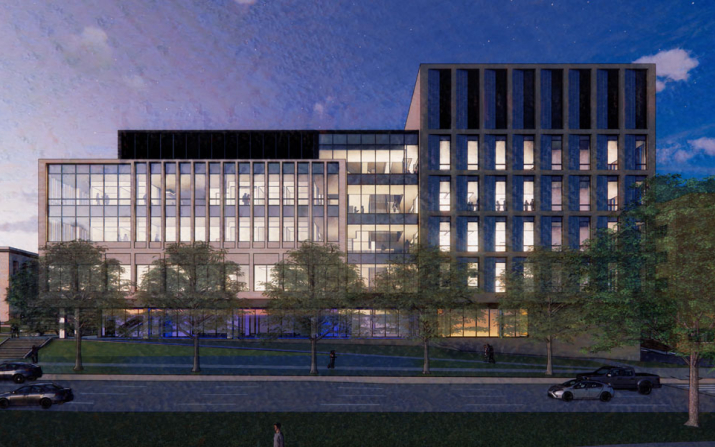Interdisciplinary research building prompts unprecedented support from Case Alumni Association

Case Western Reserve’s plans for a state-of-the-art collaborative research structure so inspired leaders of the Case Alumni Association (CAA) that they have committed $5 million to the project—the biggest gift in the organization’s nearly 140-year history.
“It’s unusual for us to make such a large donation,” said Joe Fakult (CWR ‘90), president of the CAA’s board. “But, when we looked at our mission, and considered this once-in-a-generation capital investment, it quickly earned broad support from the alumni and past presidents of our organization.”
University leaders’ goals for the Interdisciplinary Science and Engineering Building (ISEB) include dramatically growing the university’s research efforts, encouraging interactions among faculty in different fields and catalyzing the kinds of broad collaborations needed to address some of the globe’s most pressing issues.
“The message our board is sending with this commitment is that they’re behind President [Eric W.] Kaler and our deans—Ragu Balakrishnan of Case School of Engineering and Joy Ward of the College of Arts and Sciences,” said Steve Zinram, executive director of Case Alumni Association, “and believe, through this project, they can take research to a whole new level.”
The university needs more—and more modern—space to help attract exceptional new faculty and keep outstanding ones already here. The roughly 200,000 square-foot structure is being designed to convey a welcoming environment for passersby, and will include an ‘academic living room’ where people can gather for discussions about projects—or even casual conversations.
Part of the project’s purpose is to address some of the world’s most urgent issues—from climate change to applications of artificial intelligence—solving problems and improving the quality of life of people of the region and around the world.
“I was in school during the 100th anniversary of the Michelson-Morley experiment that took place on the Case campus,” Fakult recalled. “There was a good example of two professors—one from Case School of Applied Science and one from Western Reserve College—pooling together resources and bringing their different viewpoints to do groundbreaking research that opened the door to the era of modern physics. Here we are 130 years later, and ISEB can fulfill that same role.”
Sunniva Collins, PhD (GRS ‘91, GRS ‘94 material science and engineering), associate dean of professional programs in the Case School of Engineering and past president of Case Alumni Association, sees the facility as long overdue and is thrilled by the possibilities.
“I’m excited to see the level of investment into research and experiential learning,” Collins said. “We’re already a very good campus for collaborative research—but this opportunity will make it even easier.”
The association’s mission to serve and advance the interests of Case School of Engineering and the math and applied sciences of the College of Arts and Sciences is typically fulfilled through scholarship and direct support of the schools—which will continue even after this substantial commitment.
The Case Alumni Association is expected to provide close to $1.8 million in student scholarships and a roughly equal amount in laboratory and faculty support this year.
The organization also helps serve the nearly 28,000 engineering, math and applied sciences living alumni of the schools that today comprise the university.
Officials hope to be able to break ground on the project by the fall of 2024, with an anticipated completion date of 2026—the 200th anniversary of the founding of the first institution that went on to comprise Case Western Reserve.
